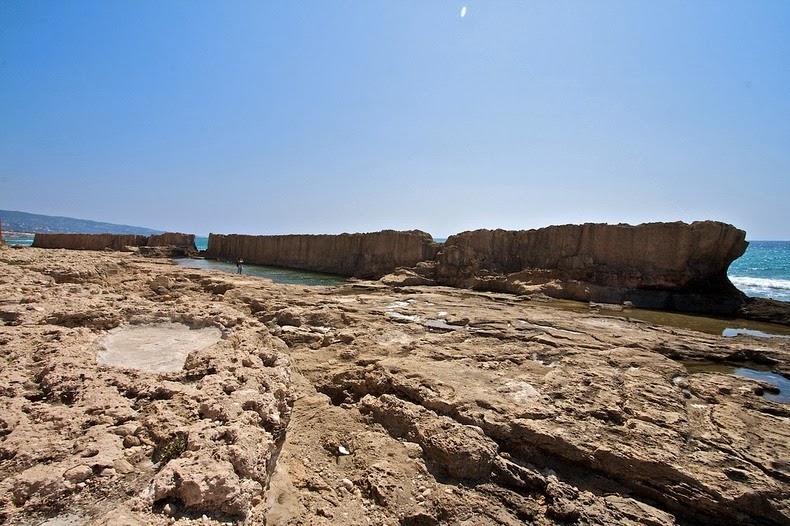The Ancient Sea Wall at Batroun, Lebanon

Batroun is a coastal city in northern Lebanon lying 50 km north of Beirut and 30 km south of Tripoli. It is one of the oldest cities in the world with a history of human occupation going back to at least 5,000 years.
Batroun was once one of the most important Phoenician cities in the region. The name Batroun derives from the Greek, Botrys (also spelled Bothrys), which was later Latinized to Botrus. Historians believe that the Greek name of the town originates from the Phoenician word bater, which means “to cut” and it refers to the maritime wall that the Phoenicians built in the sea to protect them from tidal waves, that still stand today. Other historians believe that the name of the town is derivative of the Phoenician words beit truna, which translates to “house of the chief”.
The sea wall was originally a natural structure composed of petrified sand dunes. This was reinforced by the Phoenicians with rocks and the process went on until it took its present shape in the first century B.C. The wall is 225 meters long and 1 to 1.5 meters thick. Parts of it has crumbled but the remaining still stand strong and proud in Batroun’s bay, and is a must see for an authentic piece of Lebanon’s ancient history.
The Ancient Sea Wall at Batroun, Lebanon

The Ancient Sea Wall at Batroun, Lebanon

The Ancient Sea Wall at Batroun, Lebanon

The Ancient Sea Wall at Batroun, Lebanon

The Ancient Sea Wall at Batroun, Lebanon

Source: Wikipedia, Batroun.gov.lb

No comments:
Post a Comment
Note: only a member of this blog may post a comment.